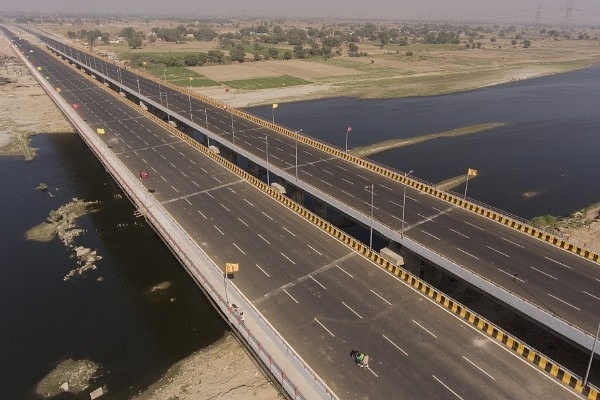
Why The Centre Is Planning An Expressway From Chennai to Thoothukudi
With the Centre and Tamil Nadu governments planning to set up multiple industrial corridors in the state, the Chennai-Thoothukudi expressway will be a boon for many industries.
Last month, the National Highway Authority of India (NHAI) invited consultants to prepare a detailed project report for developing various expressways, economic corridors and inter-corridors. These projects are expected to be taken up in the second phase of the Union government’s Bharatmala Pariyojana scheme.
One of the proposals among these is a Chennai-Thoothukudi expressway via Tiruchi. Though the technical, economic and financial viability of the expressway is yet to be worked out, the project, per se, seems be a part of the Centre’s efforts to ensure better connectivity for people moving from western districts like Coimbatore, Tirupur and Salem to the southern region.
Presently, those travelling by road from the western districts have two options to reach Chennai or Tiruchi. One is that vehicles have to go to Dharmapuri and from there take the Bangalore-Chennai National Highway.
The other is to drive via Tindivanam and then take the Chennai-Tiruchi National Highway. Those heading to Tiruchi usually prefer the second option.
The problem for these people begins from Tiruchi since they have to traverse via Madurai from where they take the highway to Thoothukudi. This route has become congested and traffic moves at a slow pace.
The other problem is that the Chennai-Tiruchi highway passes through various bottlenecks, including traffic junctions that give needless access to public en route, that slows down the movement.
NHAI can change the alignment of the highway by building flyovers at these bottlenecks and relaying the road in some places. But this will cost NHAI a huge sum as the highway will have to be relaid.
Instead of this, the Union Ministry for Road Transport and Highways feels it would be better to construct a new expressway that will give only limited access to the public enroute.
NHAI’s thinking is to go for an expressway that can give those heading to Thoothukudi from Chennai or western districts two options from Tiruchi.
The proposed Chennai-Tiruchi expressway will be via Panruti and Vridhachalam before it touches Tindivanam. From there, it will pass through Perambalur before reaching Tiruchi.
One of the features of this plan is that it will offer better connectivity to people and industries in Panruti, Vridhachalam and Perambalur. The expressway will not only ensure quicker transportation but will also be shorter by 30 kilometres than the current Chennai-Tiruchi National Highway. This can typically speed up travel by at least an hour.
From Tiruchi, the expressway will have a spur that will lead to Thanjavur.
Currently, NHAI has taken up four-laning of the highway from Thanjavur to Madurai via Pillayarpatti. So, vehicles taking the spur to Thanjavur can head towards Pillayarpatti from where NHAI plans to extend the expressway to Thoothukudi.
If a vehicle doesn’t want to go via Thanjavur from Tiruchi, it can still head to Madurai and from there make it to Thoothukudi.
The feature of the Chennai-Thoothukudi expressway via Pillayarpatti is that the distance will be shorter by 90 km. For heavy vehicles, it could be a saving of nearly two-and-half hours if the distance is shorter by 90 km.
With the Centre and Tamil Nadu governments respectively planning to set up defence industrial corridor (Bangalore-Hosur-Salem-Coimbatore-Tiruchi) and Madurai-Thoothukudi industrial corridor, the construction of the expressway will come in handy for industries.
Small and medium enterprises that are functioning in western districts like Coimbatore, Salem, Erode and Tirupur will stand to gain from such an expressway.
With the Centre also planning an expressway from Salem to Chennai — judgement on the petition against this has been reserved — the industrial sector can expect to get a boost if both these projects come through.